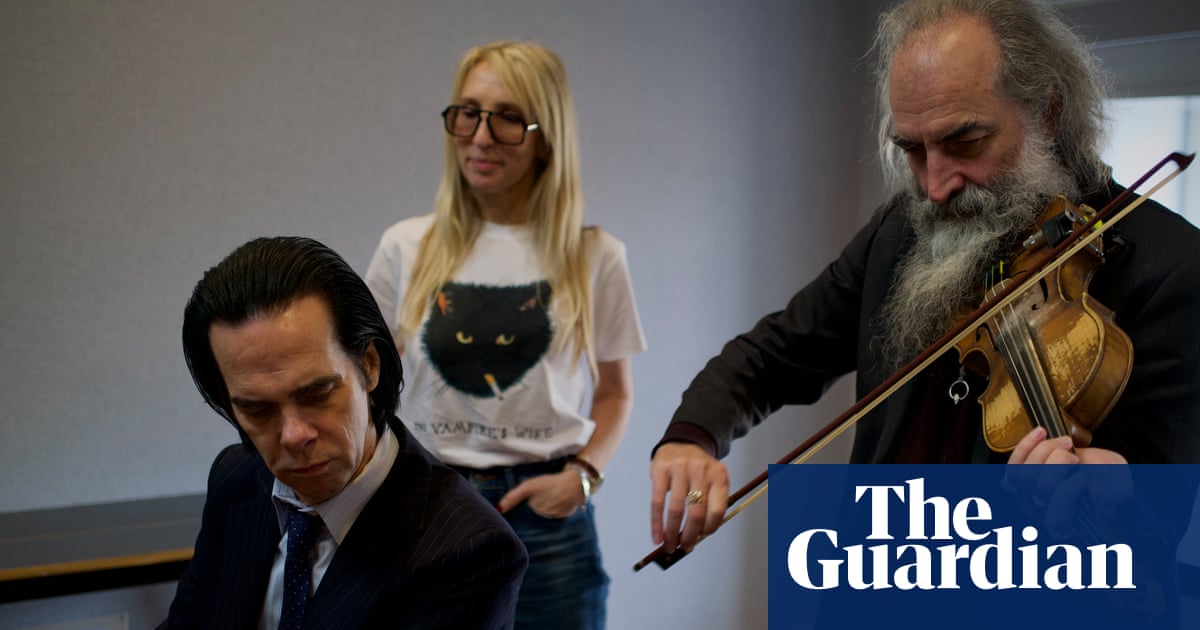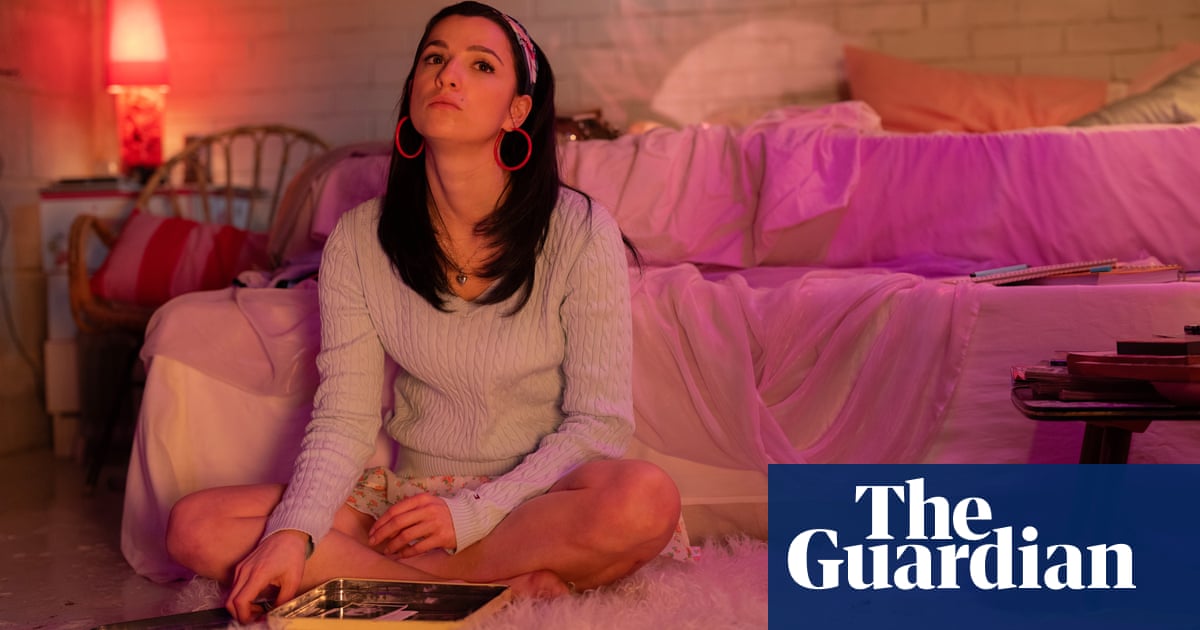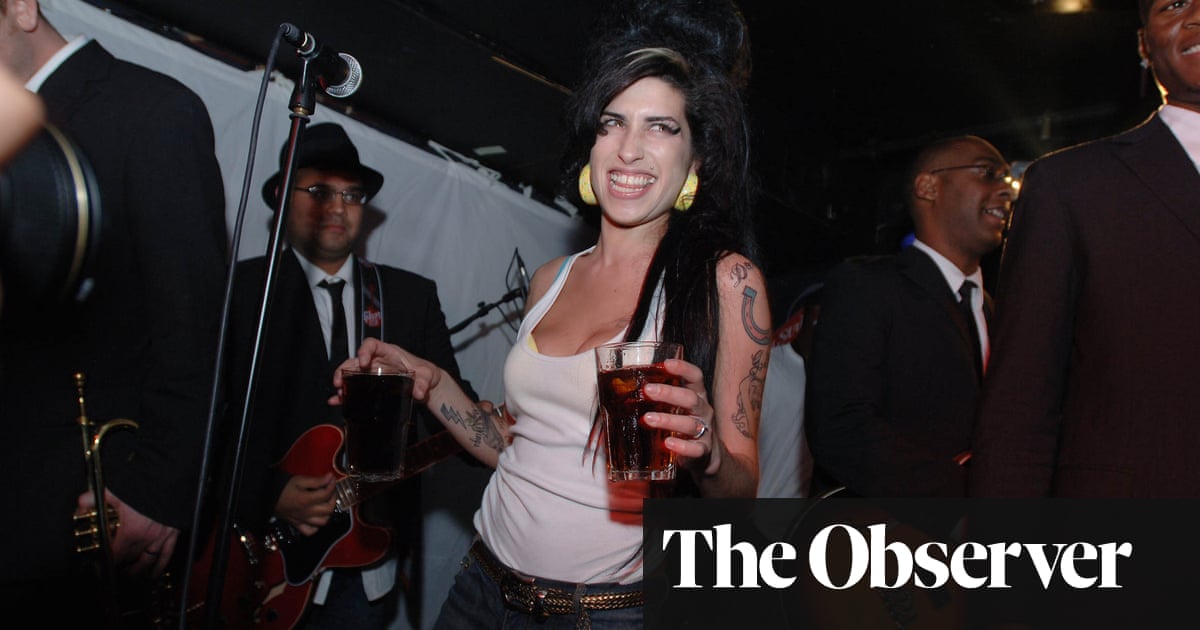
From the moment it was announced, in July 2022, the Amy Winehouse biopic Back to Black has been plagued by controversy, with fans criticising everything from the casting choices (Industry star Marisa Abela plays the singer) to the timing, with some people claiming not enough years have passed since Winehouse’s death from alcohol poisoning in 2011.
Biopics of famous musicians can be hugely lucrative but they’re also a minefield. Bohemian Rhapsody, the 2018 Freddie Mercury biopic, was widely criticised for downplaying the singer’s gay partners in favour of his relationship with Mary Austin, but ended up grossing $910m (£718m). Like Bohemian Rhapsody, Back to Black is authorised by and made with the involvement of the lead character’s estate.
Directed by Sam Taylor-Johnson, who made the 2009 John Lennon biopic Nowhere Boy as well as the 2015 Fifty Shades of Grey adaptation, Back to Black is the second film about Winehouse’s life and legacy, after the Asif Kapadia documentary Amy. Although that film won an Oscar, it was publicly condemned by Winehouse’s family. “They are trying to portray me in the worst possible light,” Amy’s father Mitch told the Guardian shortly before it debuted in Cannes. The film-makers responded that they had embarked on the project with the backing of the Winehouse family, and that their film was a reflection of their findings in the course of over 100 interviews with people who knew Amy.
Clearly, Winehouse’s story is highly contentious: the different players have their own – sometimes contradictory – opinions about what really happened. Then there’s the fact that so much of it took place behind closed doors, for instance the nine interventions Amy was recently reported to have had to try to get her off drugs and alcohol. So how does the new film’s treatment of her story compare with previous accounts?
Drugs v adultery: the reason for the divorce
Winehouse had a few romantic relationships but Back to Black focuses on the most consequential one: her short marriage to Blake Fielder-Civil, in the course of which he introduced her to heroin. The film depicts the pair meeting at the Good Mixer pub in Camden – noting the fact that Fielder-Civil (played by Jack O’Connell) had a girlfriend at the time – and their subsequent turbulent relationship, including their hasty wedding in Miami. In one scene, in which Fielder-Civil does cocaine the morning after their first night together, Winehouse tells him: “Class-A drugs are for mugs.” Mitch has said this was something Winehouse was fond of chanting at shows in the years before she started doing hard drugs herself.
In the film, Fielder-Civil continually worries that Winehouse will leave him for someone more famous, a narrative that seems to have been drawn from his 2009 divorce filing, which cited her adultery as his reason for leaving her. However, we see Fielder-Civil telling Winehouse he is divorcing her due to the self-destructive nature of their relationship, and the fact that he has detoxed in prison. Fielder-Civil struggled to stay drug-free; he returned to prison in 2011 after burgling a house to fund his habit.
Little songwriting, no audience booing
Despite production company StudioCanal initially saying Back to Black would “focus on Amy’s extraordinary genius, creativity and honesty that infused everything she did”, the film only rarely depicts her writing or recording. In fact, until fame overwhelmed her, Winehouse was known as a talented songwriter and a hard worker. In It Ain’t Retro, Jessica Lipsky’s 2021 book about Daptone Records, Binky Griptite, who played guitar on Back to Black, recalled Winehouse being “a real, 100% bona-fide musician. There were hints of her issues, but there was also a lot of getting down to business.”
In a 2019 interview with Howard Stern, Back to Black producer Mark Ronson, who is not depicted in the film, recalled the speed with which she wrote Rehab: “She was always so fast. She had the whole song on guitar. All I had to do was come up with a nice beat.”
Equally, the film doesn’t go into Winehouse’s tendency to appear drunk and disoriented on stage. Her 2007 tour is shown to be a success; it was however often an erratic affair, with Winehouse sometimes walking off stage and swearing at the audience. The film also doesn’t depict Winehouse’s catastrophic final performance in Belgrade when she took to the stage almost catatonically drunk, forgot her lyrics and the names of her bandmates, and got booed by the audience.
‘If my daddy thinks I’m fine…’: what Mitch said about rehab
Back to Black depicts a pivotal moment: the 2005 attempt by her then manager Nick Shymansky to get Amy to go to rehab. Kapadia’s film has Mitch Winehouse saying “She doesn’t need to go to rehab”. That’s basically how it goes down in Back to Black too – yet this is a version of events Mitch himself has contested many times. “What I said was, ‘She didn’t need to go to rehab at that time,’” Mitch claimed in 2015. “[Kapadia] edited me out saying ‘at that time’.”
For the most part, Mitch (played by Eddie Marsan) is depicted as a doting father in Back to Black. The film leaves out an incident from 2010, detailed in Kapadia’s documentary, in which he trailed Amy to St Lucia in the Caribbean with a camera crew in order to make a programme called My Daughter Amy, in which she appeared uneasy about being filmed.
Heavy on the alcohol, hazy on the bulimia
Back to Black doesn’t shy away from Winehouse’s addiction to alcohol. It features several scenes of the singer stumbling through London swigging spirits – but her demons were probably worse than the film depicts. Winehouse used many drugs besides alcohol and crack cocaine. In 2007, she overdosed on a combination of heroin, ecstasy, ketamine, cocaine and alcohol. And the singer’s bulimia, which she had from her teenage years, is only lightly touched on.
In Kapadia’s documentary, Winehouse’s A&R man Darcus Beese notes that her team became aware of the extent of her eating disorder during the recording of Back to Black. Alex Winehouse, Amy’s brother, told the Observer in 2013 that “what really killed her was the bulimia”. He said her body might have been “physically stronger” and more able to handle her eventual relapse, had she not been severely underweight.
Winehouse was also known to self-harm, telling Q Magazine in 2007 that she first cut herself when she was nine out of “morbid curiosity”. In Rolling Stone, writer Jenny Eliscu noted that “the scars that cover her left forearm … look considerably fresher” than she claimed.
Quitting music to embrace motherhood
Back to Black keeps returning to Winehouse’s desire to be a mother. At the height of her fame, she tells Fielder-Civil: “I don’t think I was put on this earth just to sing … I want to be a wife. I want to be a mum.” We see the chaotic couple disappointed when a pregnancy test is negative.
The record does seem to back this up. Shortly after her marriage, Winehouse told Rolling Stone she would be content to stop making music after Back to Black, to focus on homemaking: “I’m a caretaker and I want to enjoy myself and spend time with my husband,” she said. “I know I’m talented, but I wasn’t put here to sing. I was put here to be a wife and a mum and look after my family. I love what I do, but it’s not where it begins and ends.”
A sterile home and a tragic ending
Back to Black concludes with Winehouse moving to a new home in Camden, hoping to make a fresh start. But in the final scene, a sober Winehouse is distraught when a spiteful paparazzo tells her Fielder-Civil has had a baby with his new girlfriend. After Winehouse ascends the stairs and contemplates a sterile room of furniture with its wrapping still intact, the screen turns black as some text says Winehouse died in her home after a long period of sobriety – implying a link between her death and her disappointment at not having a child with Fielder-Civil. There was actually more of a gap between Amy finding out about his baby, who was born in May 2011, and the singer’s death two months later.
Ultimately, Back to Black is not the damning indictment of the music industry (and Mitch Winehouse) that Kapadia’s Amy was. Given that Winehouse was one of the first stars whose downfall was chronicled on social media as well as in the tabloids, everyone has their own version of events. It doesn’t make her fate seem any less grim.
Back to Black is in UK cinemas on 12 April
In the UK, Action on Addiction is available on 0300 330 0659. In the US, call or text SAMHSA’s National Helpline at 988. In Australia, the National Alcohol and Other Drug Hotline is at 1800 250 015; families and friends can seek help at Family Drug Support Australia at 1300 368 186
In the UK, Beat can be contacted on 0808-801-0677. In the US, help is available at nationaleatingdisorders.org or by calling ANAD’s eating disorders hotline at 800-375-7767. In Australia, the Butterfly Foundation is at 1800 33 4673. Other international helplines can be found at Eating Disorder Hope












